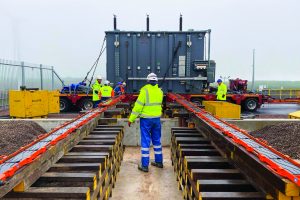According to the United States Bureau of Labor Statistics, the wind turbine technician profession — and opportunities for employment therein — is expected to increase by 108 percent over the next 10 years. This projection is much higher than the other occupations classified under the category of installation, maintenance, and repair, which is expected to grow by only 6 percent throughout the same time frame. This statistic indicates that U.S. wind energy generation is a growing industry with approximately 8.6 GW of newly installed capacity over the past year, as well as the tens of thousands of previously installed turbines that will need to be operated and maintained well into the next couple decades. However, the question remains — where will these workers come from?
As I have discussed in previous articles, there is a coming shortfall of wind workers in this industry, as well as a requirement for these workers to be properly trained and qualified in order to perform maintenance work on the wind turbines. Additionally, there is potential for workers from industries that are similar to the wind energy industry to transition into being wind technicians. There are two U.S. industries that have seen a recent downturn and may have trained workers who are currently seeking other employment options. The first is the mining industry. With the low prices of mining commodities, many mining companies are downsizing their workforce to stay in business. Mining involves many skills that can be transferable to the wind industry, including instrumentation, data analytics, heavy machinery maintenance, and troubleshooting hydraulics and electronic systems.
The other pool of potential workers could come from the oil and gas industry. The price manipulation of oil overseas coupled with the boom in fracking technology in the U.S. has created a glut on oil and gas worldwide. As a consequence, many experienced professionals in that industry find themselves without work. Before joining Ecotech Institute as the director of career development, Natasha Maier spent a decade in the oil and gas industry as a human resources consultant. Now, she finds jobs and placement for graduates of the school’s Wind Turbine Technology program.
“Having previously worked in the oil and gas industry, I have seen a lot of the technical and safety skills transfer into the wind industry,” Maier said. “With some additional training, these oil and gas technicians can become proficient wind technicians.”
I met with one such technician while I was training wind techs at the Panther Creek Wind Farm in Big Spring, Texas. I asked John Sherrod, an employee of E.ON Climate and Renewables North America, how he felt the skills from his career in oil and gas carried over to wind.
“The skills I learned while troubleshooting the pumping units, PLCs [programmable logic controllers], and SCADA systems in oil and gas were very close to what I do while troubleshooting wind turbines,” Sherrod said.
Sherrod spent 14 years in the oil and gas industry, first as a pumper, and then as a well technician who worked with controllers and PLCs.
“I made the transition from oil and gas to wind energy because I saw the layoffs coming, and I wanted to further my career in control systems and PLCs,” Sherrod said.
As an educator in this industry, Sherrod was one of the students I trained through the Danish Wind Power Academy Americas when he started working at E.ON. When asked how difficult it was to transition from the theory and schematics found in a classroom to troubleshooting in the field, Sherrod said, “When I first started with E.ON, I didn’t know anything about wind. The class helped me understand how the turbine works, and once I started working on the turbines with more experienced technicians, I could understand the terminology and what they were saying.”
The retooling and repurposing of technicians from industries outside of wind energy can take many forms. Some may only need to be shown the schematics, while others may require a long-term training plan to fully understand how wind power plants operate. From my 20-plus years of teaching and training adult students, I can honestly say that there is no specific one path that’s best for transitioning these technicians. However, finding workers with the right attitude and some heavy-industry experience is a great start for addressing the labor shortage and having qualified technicians working on the towers.




































